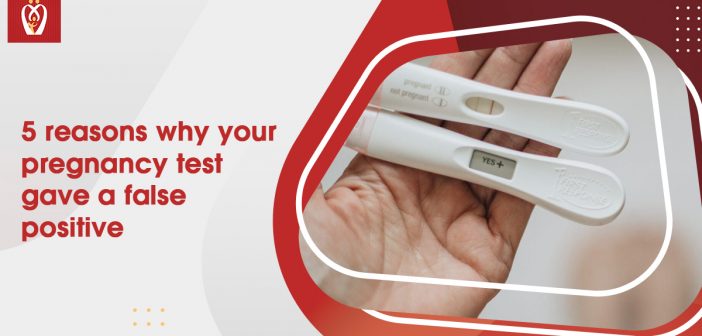Taking a pregnancy test is a roller coaster of emotions no matter what. Anyone who has had trouble getting pregnant in the past or is actively trying to conceive may find getting a false positive pregnancy test result to be a particularly upsetting experience. It’s a heartbreaking feeling like no other.
False positive pregnancy tests can be just as devastating when you’re actively trying to avoid pregnancy.
However, it’s good to know that misreadings of pregnancy tests are extremely rare. However, they are possible, which is unfortunate.
Chemical pregnancy
Having a positive pregnancy test doesn’t necessarily mean that you’re actually pregnant. A “false positive” is the term for this.
It’s possible that a chemical pregnancy is to blame. When an embryo, which is a fertilised egg, is unable to implant or grow, it results in a chemical pregnancy.
Chemical pregnancies may be caused by unknown factors.
If a pregnancy test isn’t taken, they’re thought to be extremely common, but they’re often missed. It can be emotionally draining when these early test results are incorrect.
Because of this, it is recommended that you use an at-home pregnancy test one week after your period is expected to begin.
A recent miscarriage or abortion
Within minutes of an embryo being implanted in a woman’s uterus, it begins producing human chorionic gonadotropin. The cells that surround a developing embryo secrete HCG, which is a pregnancy-inducing hormone. A positive test result is triggered by the presence of hCG.
Over the course of 9-35 days following an abortion or miscarriage, hCG levels begin to decline. It is possible to get a false-positive pregnancy test result within this window because the test is still detecting pregnancy hormones and cannot tell that the levels are declining.
User error
Pregnancy tests performed at home are not 100% accurate. It is important that you follow the instructions on the package exactly.
However, user errors can still occur despite these safeguards. Taking the test too early in your cycle is one of the most common mistakes. This may result in an erroneous result, such as a false negative or positive.
Using the test when your urine isn’t heavily diluted with water is also critical. You can use the test at any time of day, but it is most effective when your urine is at its most concentrated.
It’s crucial that you follow the directions on the dipstick and leave it in your urine for the specified amount of time. Make use of a stopwatch or smartphone timer. That will allow you to keep track of how long the dipstick has been in your urine.
Set a timer to pass the time until you get your results.
Evaporation Lines Can Be Complicated
Evaporation lines that appear on a pregnancy test may be mistaken for a positive if the instructions are not followed precisely. A plus or minus sign may appear on some tests when hCG is detected, and two lines when hCG is not detected.
For the line tests, there are times when a second line appears in a different colour. An evaporation line or the beginning of pregnancy are two possibilities for this pattern.
The evaporation line may show up more clearly if you read the test after the recommended time period in the instructions. By following the test’s timing instructions to the letter, you can avoid any confusion.
Ectopic Pregnancy
An ectopic pregnancy occurs when an embryo grows outside of the uterus. More than 90% of ectopic pregnancies occur in the fallopian tube. It is possible for the tube to burst as the pregnancy progresses (rupture). Internal bleeding can be severe if there is a rupture. Life-threatening complications may necessitate surgery.
The embryo still produces hCG, resulting in a positive pregnancy test even though it isn’t viable.
Medical attention should be sought as soon as possible if you are experiencing severe pain on one side of the lower abdomen and/or spotting with a positive pregnancy test for an ectopic pregnancy.
False-positive test results can cause a lot of stress for you and your family. At-home pregnancy tests should not be used until one week after your period is expected to begin.
In addition, a GP or a local clinic can perform a formal diagnosis for the most accurate result.







